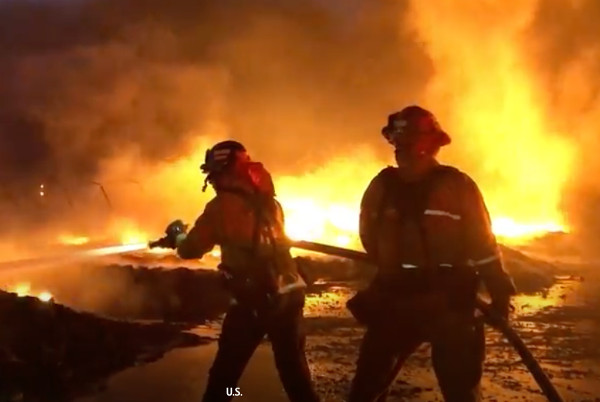
SAN JOSE, CA — During October, millions of people in the San Francisco Bay Area and northern California were without electricity for days as Pacific Gas & Electric shut down power to prevent loose power lines from starting deadly fires during a Red Flag warning—a period of high winds and very low humidity. Schools were canceled, small businesses lost spoiled food, and peoples’ lives were endangered with the loss of power for medical equipment.
How did it get to this point? Was this simply a necessary evil, to keep everyone safe after hundreds were killed in wildfires over the last two years? Was it due to conditions resulting from climate change?
While undoubtedly climate change is a contributing factor to wildfires, PG&E has a long history of shortcuts in maintenance. The California Public Utilities Commission (CPUC) determined that between 1987 and 1994 PG&E diverted $495 million from its maintenance budget, like tree trimming, to boost corporate profits. It also diverted money from power line undergrounding projects.
In 2010 a horrific natural gas pipeline explosion in San Bruno California killed 8 people, due to a bad welding seam. Pipelines with a history of failed seams are required to be checked with a method that can detect for that, but PG&E used a cheaper method that didn’t catch it.
The state agency CalFire has determined that PG&E was partially responsible for multiple North Bay wildfires in 2017, which caused a total of 18 deaths and huge property losses. They could be looking at a total liability of $30 billion, and face criminal penalties over the 2018 Camp Fire that incinerated 86 people, and burned 14,000 homes. PG&E has declared bankruptcy to get protection from lawsuits.
PG&E is seeking “cost of capital” rate hikes for maintenance projects that will undoubtedly go into shareholder profits. One of the biggest lobbyists in the state, they spent $6 million last year to convince the legislature that it was broke and needed a bailout. Outgoing governor Jerry Brown signed a wildfire liability bill that helped PG&E.
Clearly PG&E is not fit to run an essential service that should ensure the well being of the people and the economy. After public outcry, the mayors of San Jose and San Francisco are talking about establishing city-owned utilities. At a CPUC meeting in November, 2018, the public cried “democratize our energy, don’t bail out PG&E” and held signs that read “Make PG&E Public.”
Municipal ownership of energy is not a new idea—there are already many public utilities in the U.S. Nebraska, a pioneer of the socialization of energy distribution, has a cost per kilowatt hour lower than all its neighboring states. The Providence chapter of the Democratic Socialists of America has begun a #NationalizeGrid campaign, an effort aimed at ending utility shutoffs, limiting rate increases, and establishing democratic control over the primary gas and electricity provider in the state of Rhode Island.
There is a national upsurge of support for a Green New Deal to combat climate change by moving to renewable energy sources, which can only be accomplished by having public control of the entire energy industry. Bernie Sanders is calling for a complete transition to “energy efficiency” and “sustainable energy”—much of which would be owned and administered by the federal government. Then the fight would be to insure the government actually runs it in the interest of the people!
